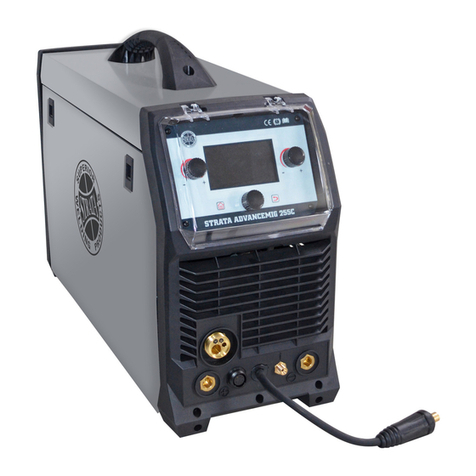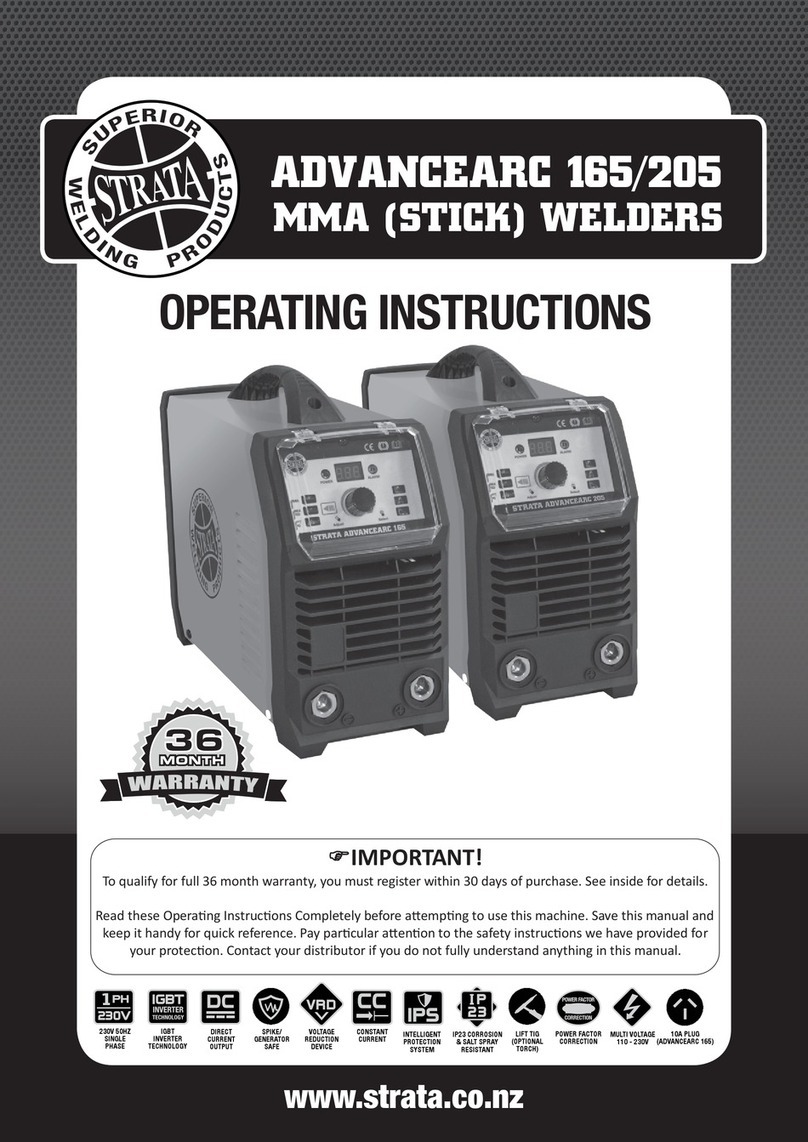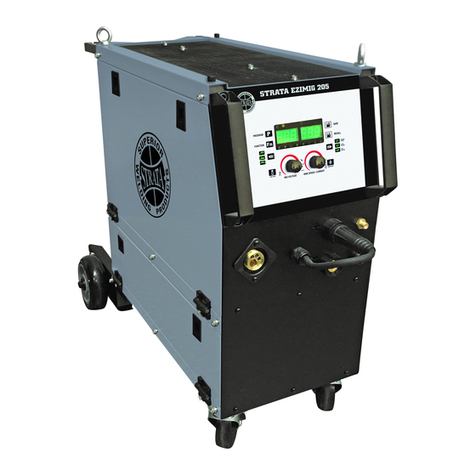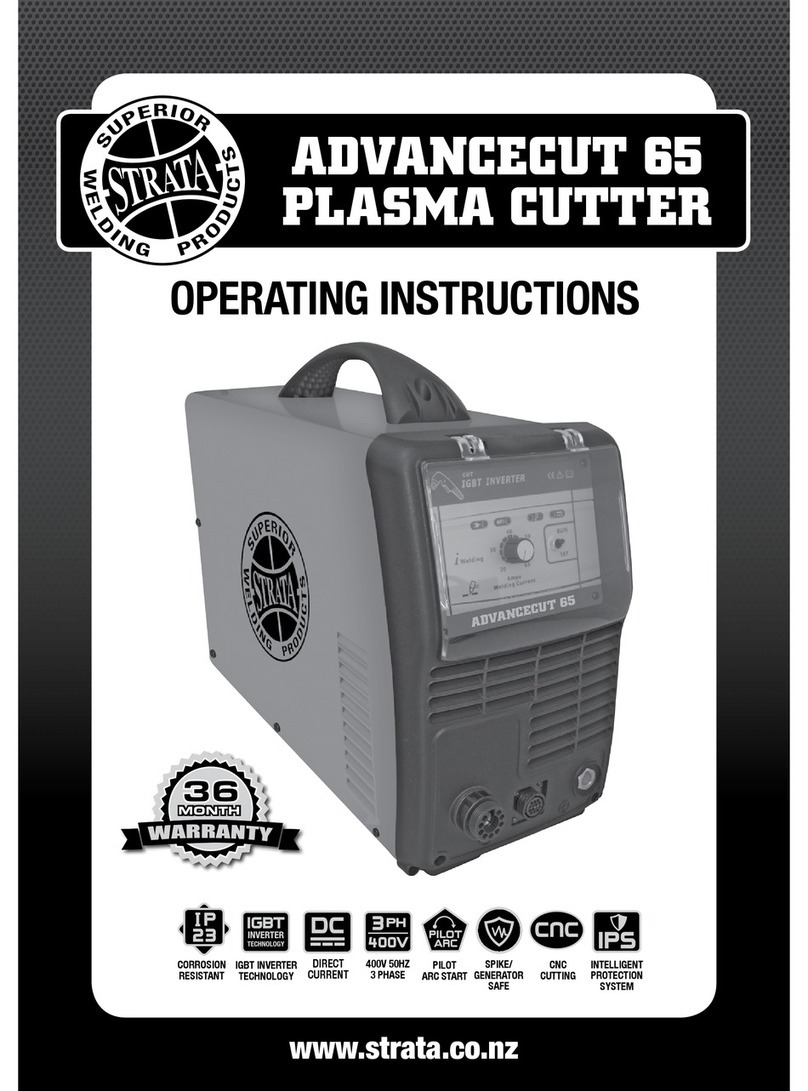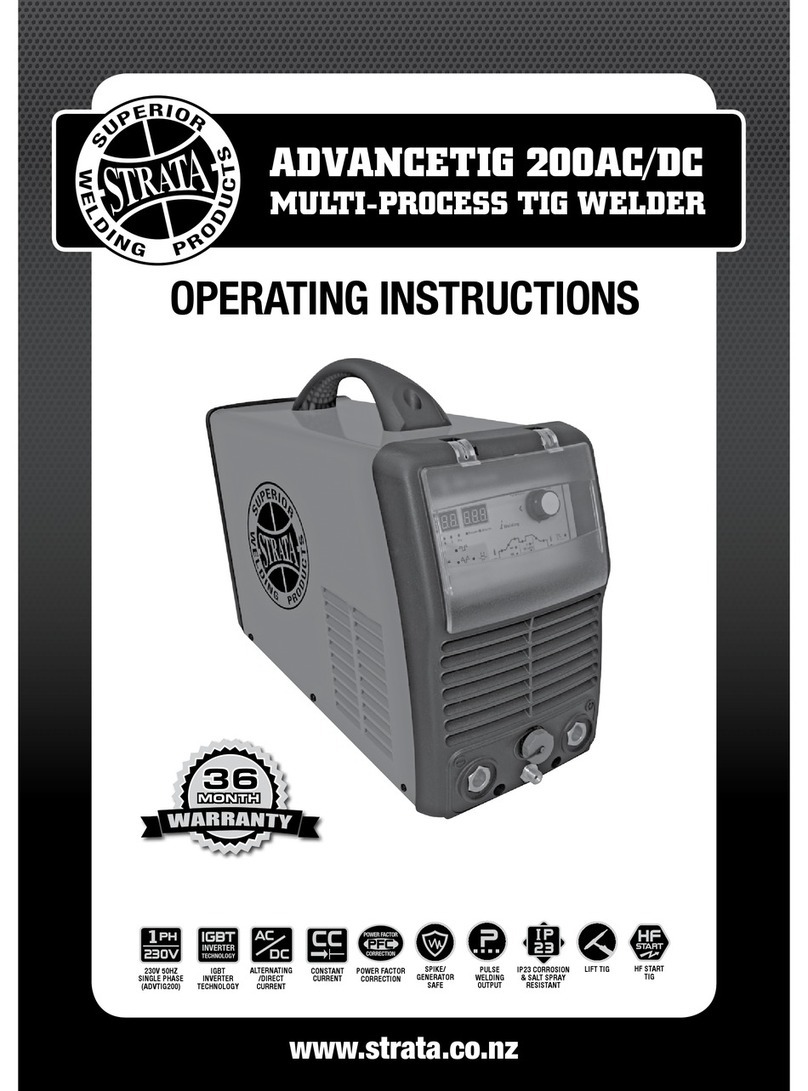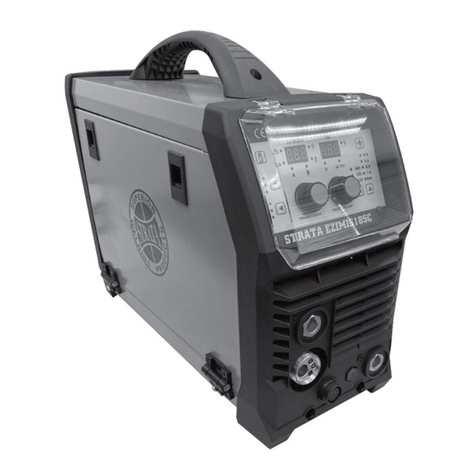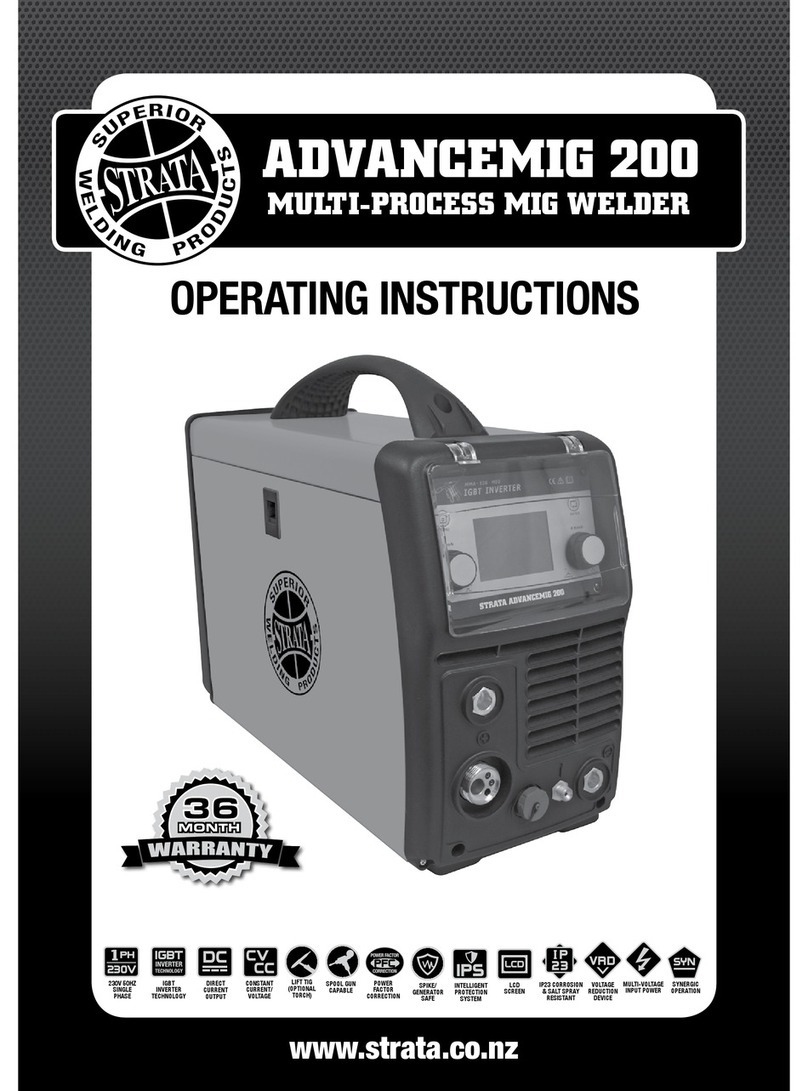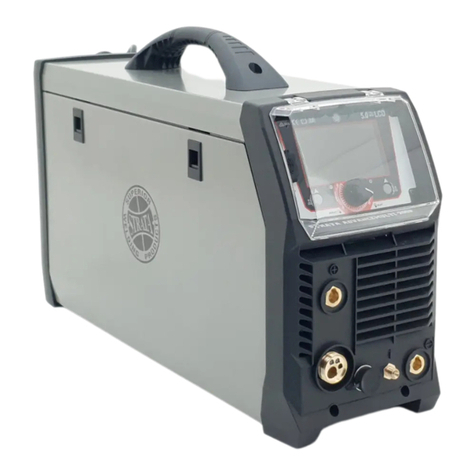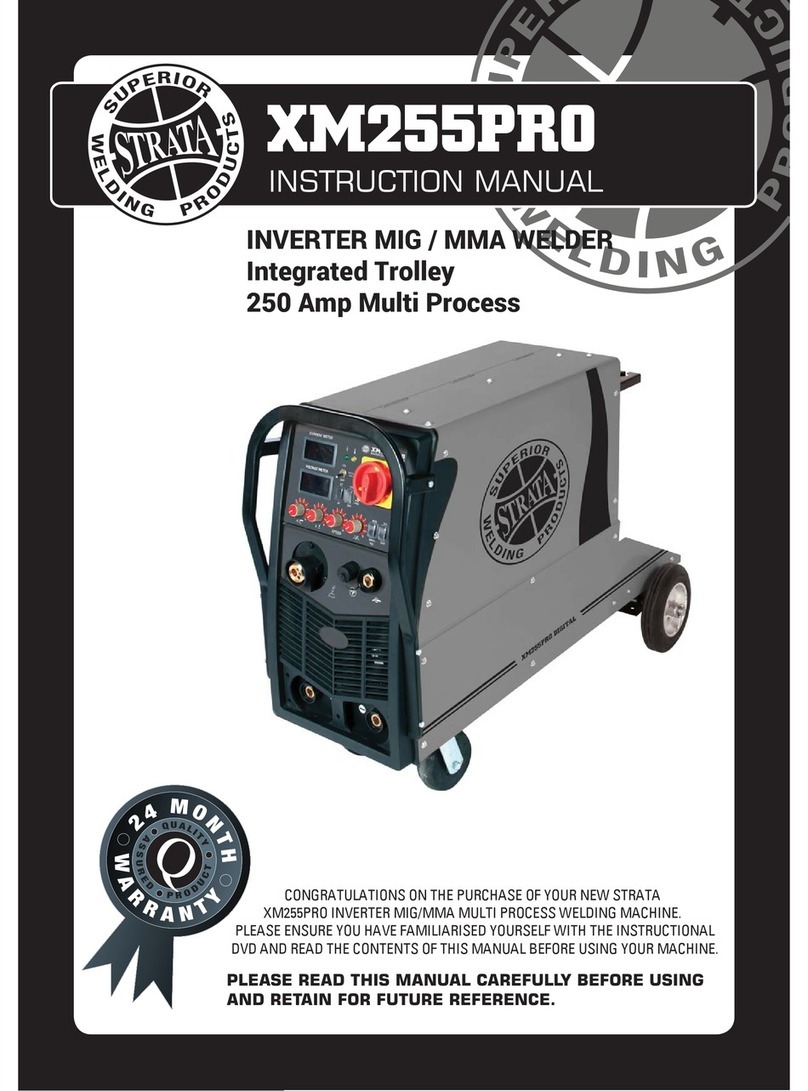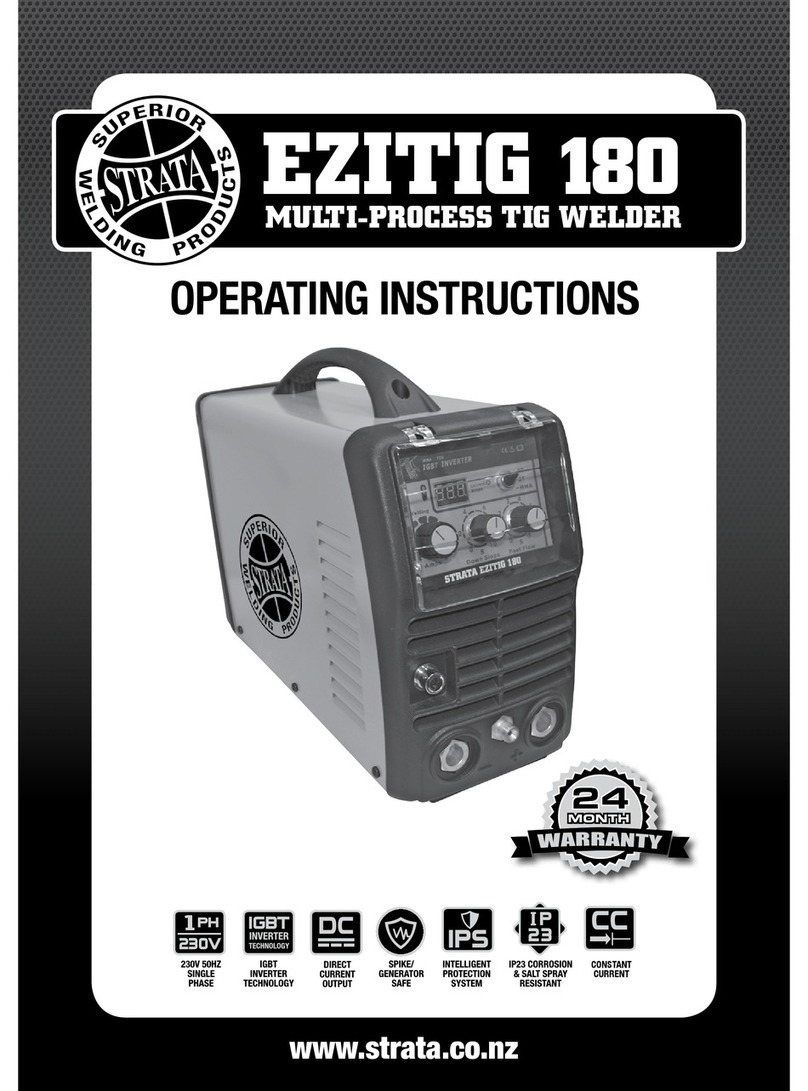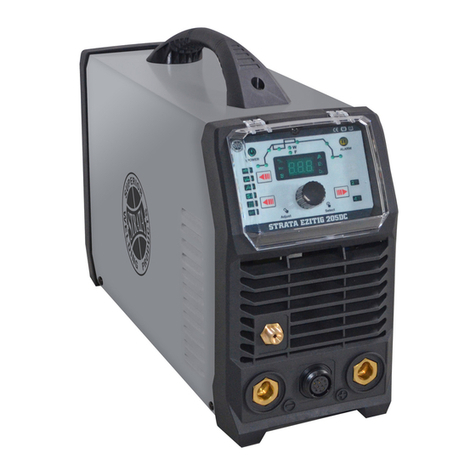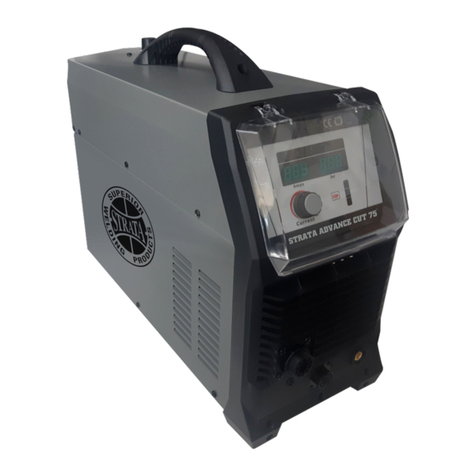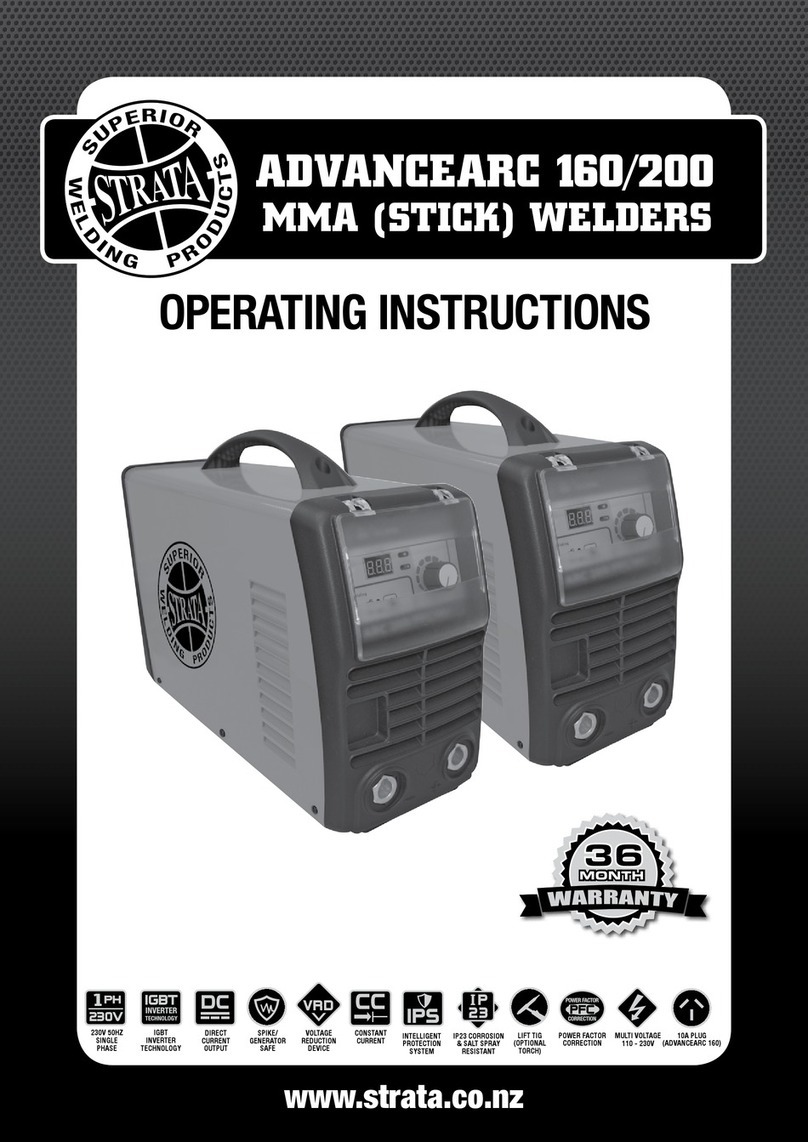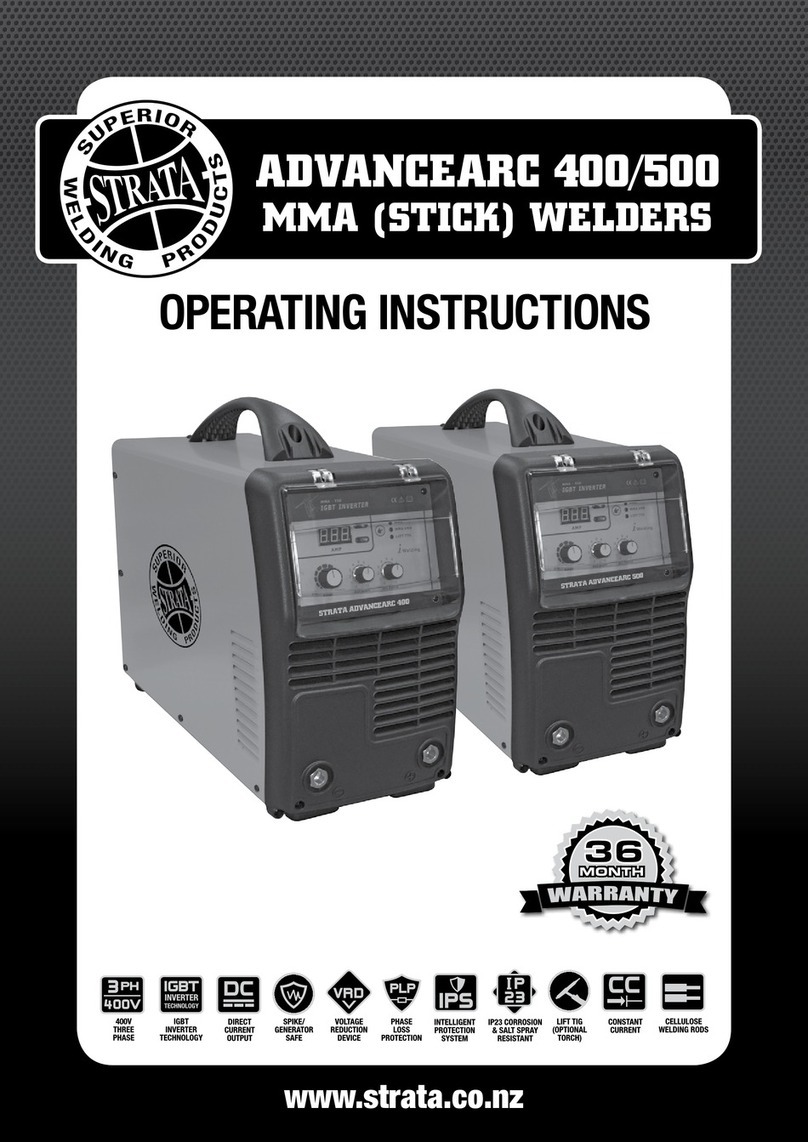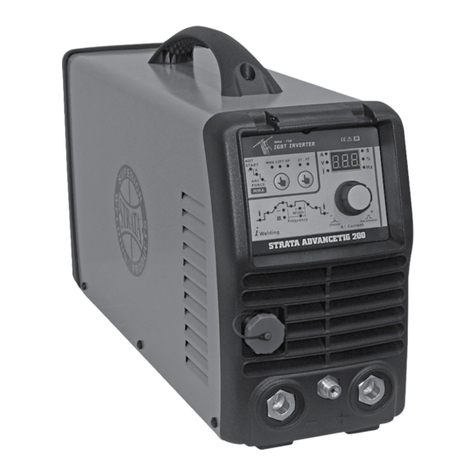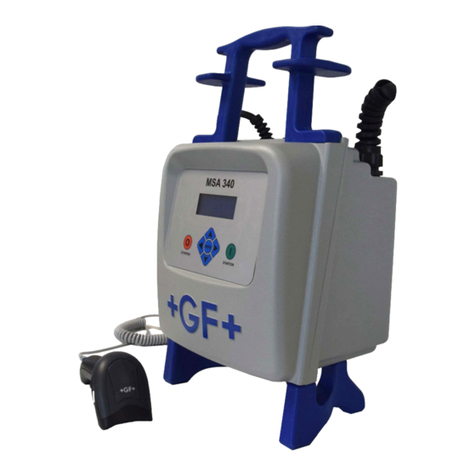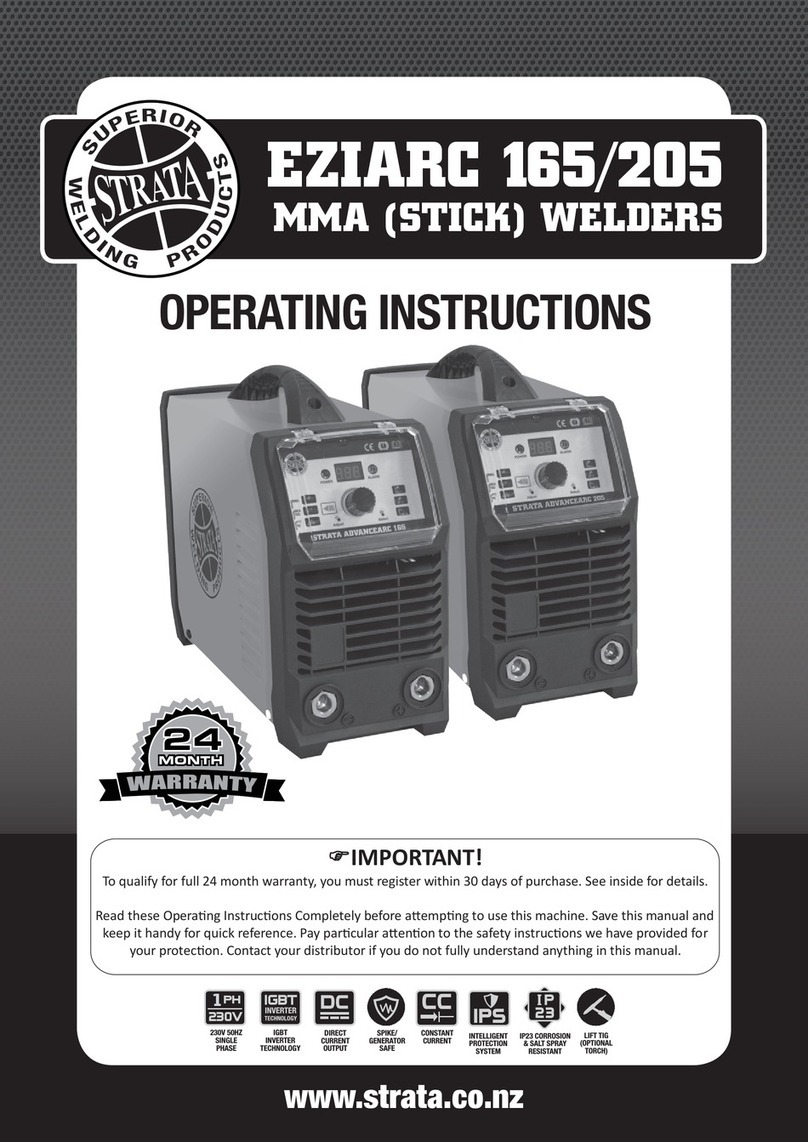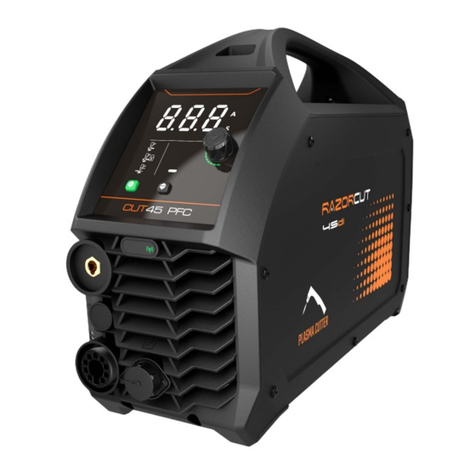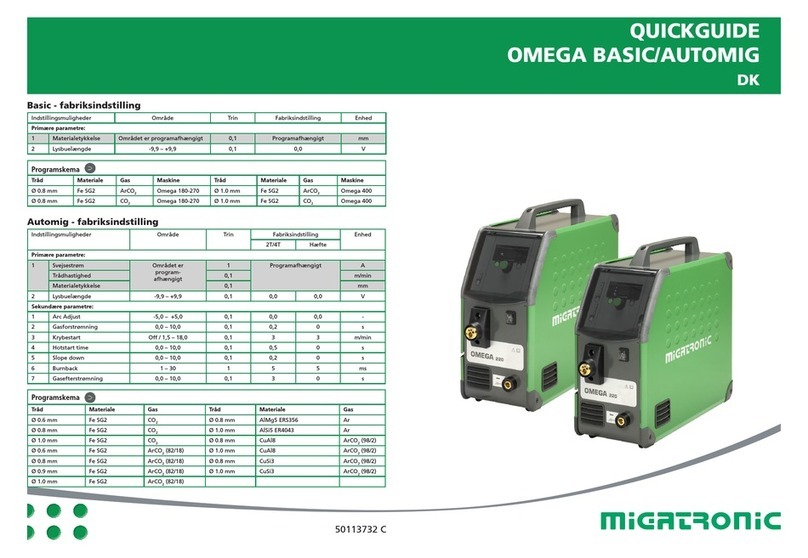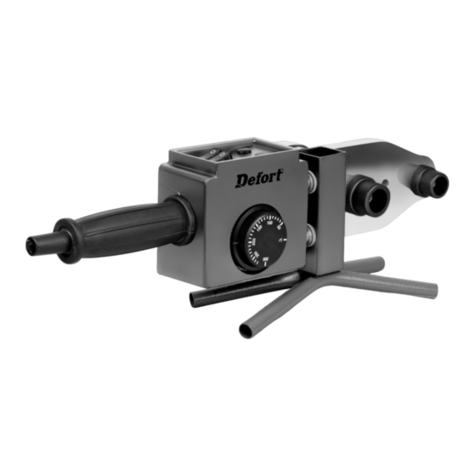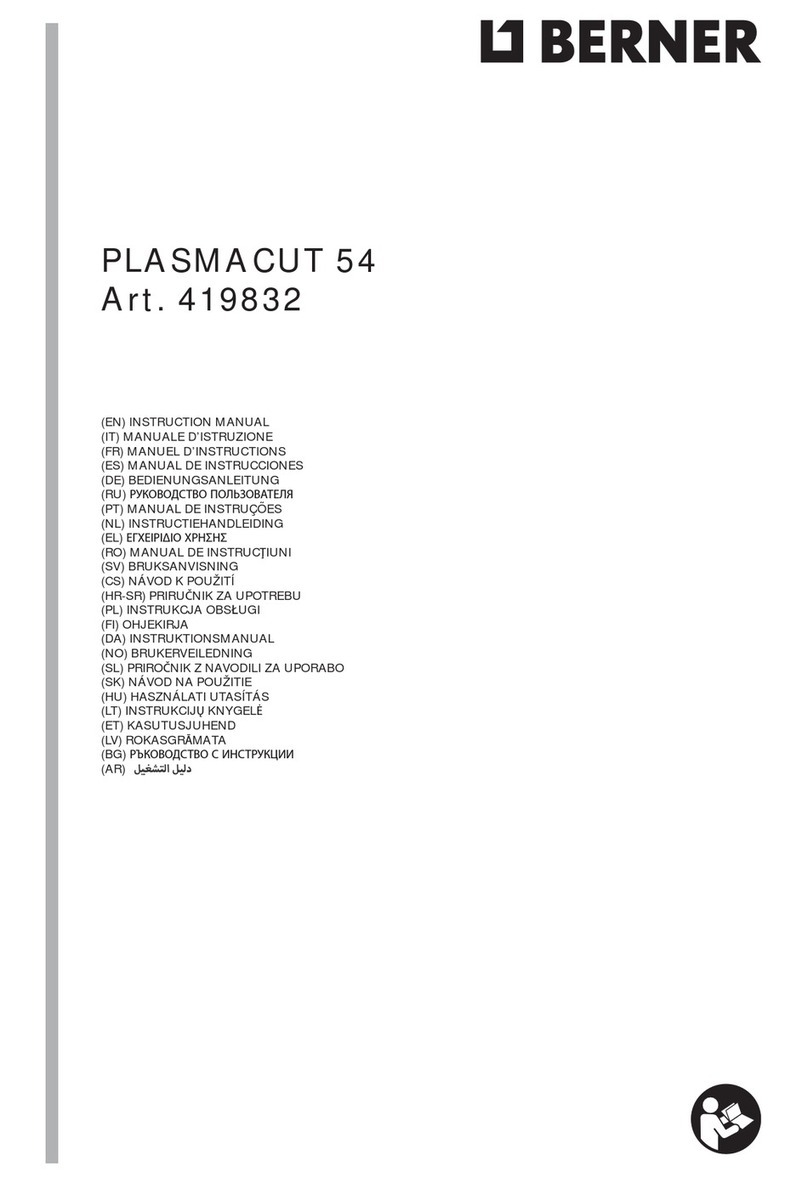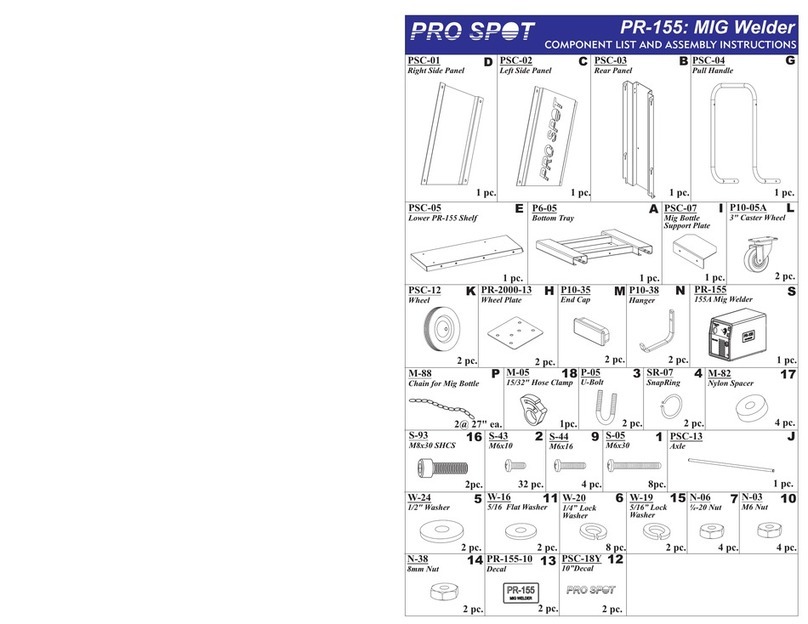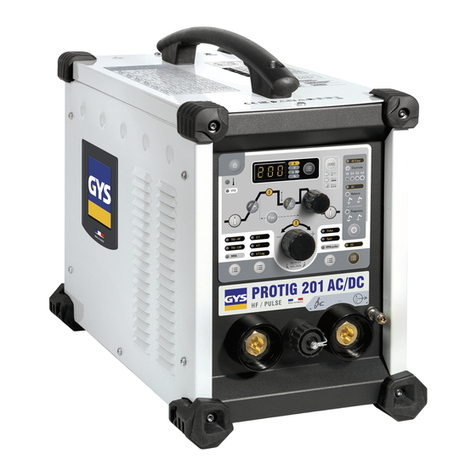
7
www.strata.co.nz
ADVANCEMIG 250
Slow Feed (10)
Sometimes known as ‘hot start’. When a weld is start-
ed, the workpiece and the wire will be ‘cold’ compared
to welding temperature, this can cause an uneven and
poor start to the weld using the voltage and wirefeed
speed selected as optimal once the arc is established.
This setting slows the wire speed down at the start
of the weld which improves the weld starting perfor-
mance.
Gas Pre Flow (11)
Controls the period shielding gas will flow for when
the torch is triggered before the arc starts. This purg-
es the work area of atmospheric gas which could con-
taminate the weld before the weld starts.
Gas Post Flow (8)
Controls the period of time the shielding gas contin-
ues to flow for after the arc is stopped. This protects
the weld area from contamination while it is still hot
enough to react with atmospheric gases, after the
weld is finished.
Program Settings (25,26,28,30)
WithineachMIGsynergicprogramitispossibleto
save specific current/ voltage settings. Press the
‘save’button(30)tosave a settingwithinasyner-
gicprogram.Pressthe‘delete’button(28)toremove
the saved setting. To recall saved settings, press the
‘abstract(extract)’button(26).Pressingthisbutton
multiple times will access each saved setting within a
synergicprogram.‘Reset’button(25)clearsallsaved
settings.
Arc Force (0-10)
AnMMAweldingpowersourceisdesignedtopro-
duce constant output current (CC). This means with
different types of electrode and arc length; the weld-
ing voltage varies to keep the current constant. This
can cause instability in some welding conditions as
MMAweldingelectrodeswillhaveaminimumvoltage
they can operate with and still have a stable arc. Arc
Forcecontrolbooststheweldingpowerifitssenses
the welding voltage is getting too low. The higher the
arc force adjustment, the higher the minimum voltage
that the power source will allow. This effect will also
causetheweldingcurrenttoincrease.0isArcForce
off,10ismaximumArcForce.Thisispracticallyuse-
ful for electrode types that have a higher operating
voltage requirement or joint types that require a short
arc length such as out of position welds.
Tips & Tricks
MIG Voltage & Wire Speed Settings
Voltage is essentially the power in the welding arc
that sets the heat. The wire speed feed simply con-
trols the rate at which the welding wire is fed into the
weldpool.Foranyvoltagepositionsetting,therewill
be a specific corresponding ‘sweet spot’ in the wire
feeding speed that will give the smoothest and most
stable welding arc.
The correct wire feeding speed for a given voltage
setting is affected by welding wire type and size,
shieldinggas, weldingmaterial andjoint type.It is
recommended to set the welding voltage as desired
and then slowly adjust the wire speed until the arc is
smooth and stable. When reaching this point, if the
penetration/heatinputistoomuch/notenough,ad-
justthevoltagesettingandrepeattheprocess.Ifthe
operator is not able to achieve a smooth and stable
arc with the desired heat input for the weld, it is likely
thatachangeinwiresizeand/orshieldinggastypeis
required (assuming all other factors are correct).
Synergicfunction makesthe setupof MIGwelding
more simple, the operator simply sets the welding
current like MMA or TIG welding and the machine
calculates the optimal voltage and wire speed for the
material type, wire type and size and shielding gas
used.Obviouslyothervariablessuchasweldingjoint
type and thickness, air temperature affect the optimal
voltage and wire feed setting, so the program pro-
vides a voltage fine tuning function for the synergic
program selected.
TheADVANCEMIG250hasanextralevel of intelli-
gence in the synergic programs that will not permit
settings outside of those that will provide good weld-
ing results for the material, wire size and shielding
gas used. This will limit the current range that can set
